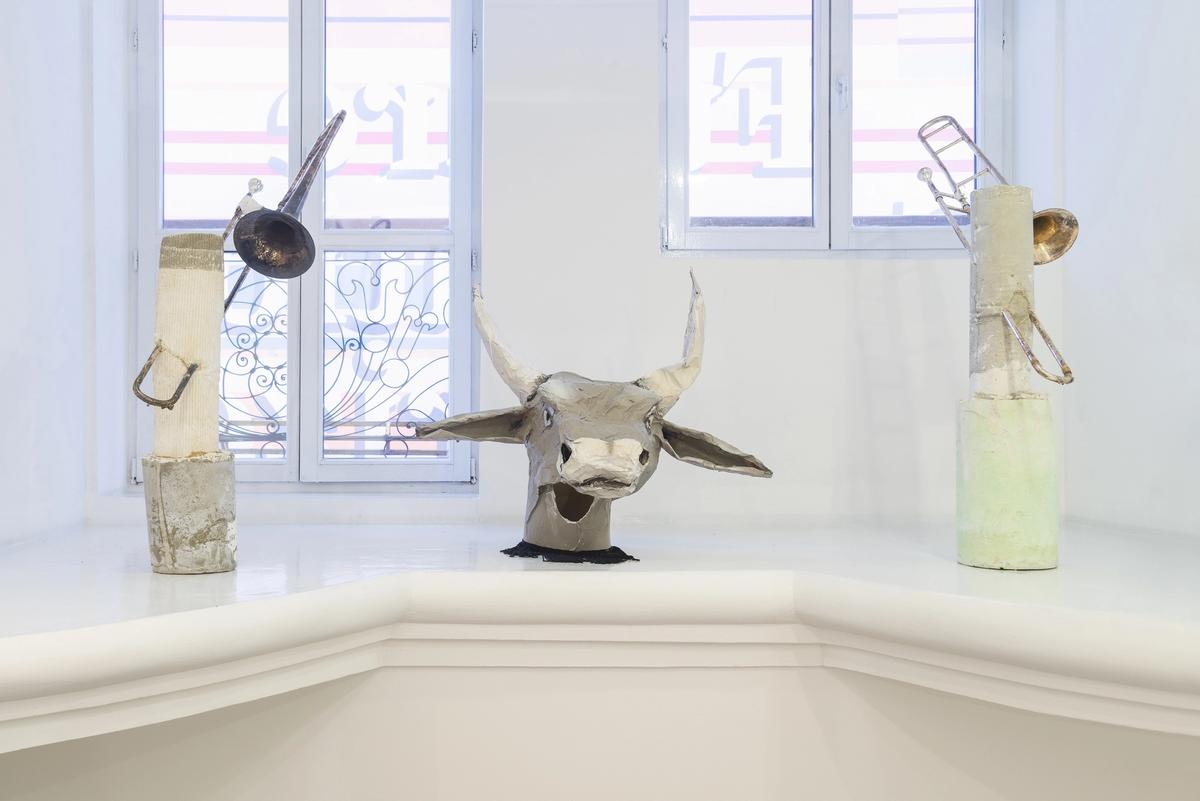An exhibition of work by 21 international artists and collectives competing for one of the world’s highest value art prizes opened in Kiev, Ukraine on 8 February at a packed-out event attended by a mixture of Ukrainian high-society and members of the local art scene. Spread across three floors of the city’s PinchukArtCentre, the exhibition marks ten years since the biannual Future Generation Art Prize was launched by the centre’s billionaire owner, Victor Pinchuk. As in previous years, the winning artist, set to be announced at an awards ceremony on 22 March, will receive the substantial sum of $100,000, split between a $60,000 cash prize and a $40,000 investment in their practice.
Known for casting a particularly wide net—with anyone in the world who is 35 or under able to enter, irrespective of their artistic standing or background—this year’s prize attracted almost 6,000 applications from a total of 158 countries. The daunting task of sifting through the applications was carried out over three weeks by a 6-person selection committee, nominated by the seven members of the prize’s 2019 jury. The jury—which includes Tim Marlow, the artistic director of the Royal Academy of Arts in London, and Christine Macel, the chief curator of the Centre Pompidou, Paris—will choose the ultimate winner after visiting the exhibition in person.
The Pinchuk centre’s Belgian artistic director, Björn Geldhof, says that the effect of exhibiting work by finalists of each edition of the prize in Kiev has been transformative for contemporary art in Ukraine. It has, he says, had “a very deep impact on how Ukrainian artists have positioned themselves. It has allowed them to emancipate themselves and it has also supported them into a global discussion, giving them trust that what they’re doing is somehow closely connected to what other artists are doing around the world.”

Kasper Bosmans, Syrinx (2018) © PinchukArtCentre 2019. Photo: Maksim Belousov
Key to creating this bridge between Ukrainian art and those working internationally, Geldhof explains, is the fact that the winner of the PinchukArtCentre Prize, a biannual national prize also organised by the centre, is automatically included as a finalist for the next Future Generation prize. Speaking about the current exhibition, which was co-curated by Geldhof, he says he was “particularly happy to hear” foreign visitors praise the work of Ukrainian artist Anna Zvyagintseva, the winner of the PinchukArtCentre Prize in 2018. Geldhof adds that while it was legitimate to question the quality of Ukrainian art relative to international standards when the prizes were founded, that question has now “ceased to exist”.
With each off the 21 finalists given a space in the exhibition that roughly equates to the size of a small commercial gallery, the work on show, most of which has been newly produced, spans an array of video and multi-media pieces with high production standards, alongside elegant, sculptural installations and a small dose of more traditional, yet polished, paintings and drawings. Immersive highlights include a multi-media installation by Thailand’s Korakrit Arunanondchai in a room littered with seashells and a video work by Lithuanian Emilija Škarnulytė duplicated by the mirrored ceiling above.
The exhibition will remain on show in Kiev until 7 April, with a an updated version later moving to Venice from 9 May to 1 August as part of this year’s Venice Biennale.
The full list of finalists:
Monira Al Qadiri (35 – Kuwait), Yu Araki (33 – Japan), Korakrit Arunanondchai (31 – Thailand), Kasper Bosmans (28 – Belgium), Madison Bycroft (31 – Australia), Alia Farid (33 – Kuwait), Gabrielle Goliath (34 – South Africa), Rodrigo Hernández (34 – Mexico), Laura Huertas Millán (35 – Colombia), Marguerite Humeau (31 – France), Eli Lundgaard (28 – Norway), Taus Makhacheva (35 – Russia), Toyin Ojih Odutola (33 - Nigeria), Sondra Perry (31 – United States), Gala Porras-Kim (33 – Colombia), Emilija Škarnulytė (31 – Lithuania), Jakob Steensen (31 – Denmark), Daniel Turner (35 – United States), Anna Zvyagintseva (32 – Ukraine) and artist collectives Basel Abbas and Ruanne Abou-Rahme and Cooking Sections.


